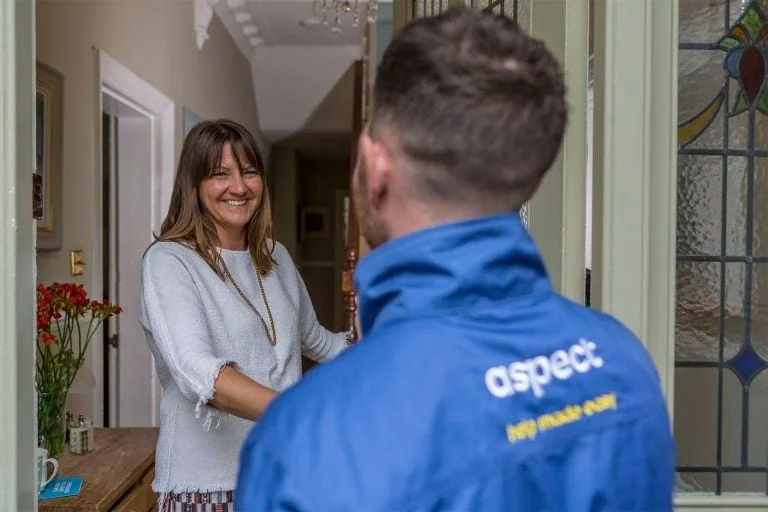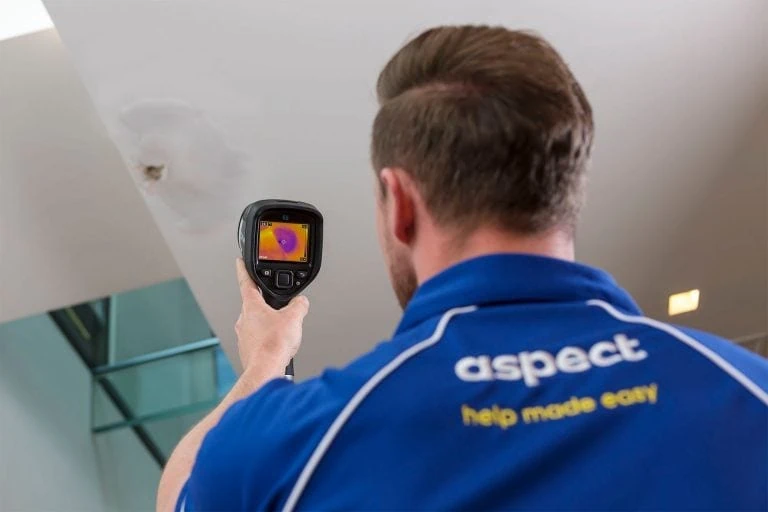When our leak detection experts arrive on site. They’ll usually carry out the following procedures:
1. Checking for a leak:
- A meter reading will be taken after turning off all devices. This will check if there’s continuous water flow, which suggests a leak.
- For further confirmation, our tradesperson will do a pressure test. This is where the pipework is pressurised and then monitored. If a drop in pressure is detected, this would confirm that a leak is present.
2. Pinpointing the leak:
Scanning equipment will be used to mark the survey line (the path which pipes below ground have been laid).
- Highly sensitive acoustic equipment is used. This works by detecting the subtle vibrations that water that’s under pressure makes when leaking from pipes. A highly sensitive microphone amplifies the vibrations into sounds.
- Pipes can also be drained and filled with tracer gas. The gas is completely safe and inert. A device is used to detect the gas when it seeps out of the pipework. The gas penetrates any surface, including paving, concrete slabs, tiles and soil.
Sometimes, water main supply leaks are traced indoors. In these instances, thermal imaging can also be used to help find the leak. Visit our underfloor leak detection page to find out more.
3. Visual confirmation:
After the detection methods have been used to find where the leak is, a small hole will be dug. This will be in a localised area and lets the tradesperson see the leak for confirmation.
4. Excavating for repairs:
Based on the visual assessment, a plan for repairs will be suggested. This could involve specialist excavation equipment depending on the size and depth of the problem.
We can usually estimate for repairs separately from the investigation work. Once repairs are done, we can quote for reinstatement.
Reinstatement could involve things like relaying a concrete slab if an existing one was broken while being dug up.







